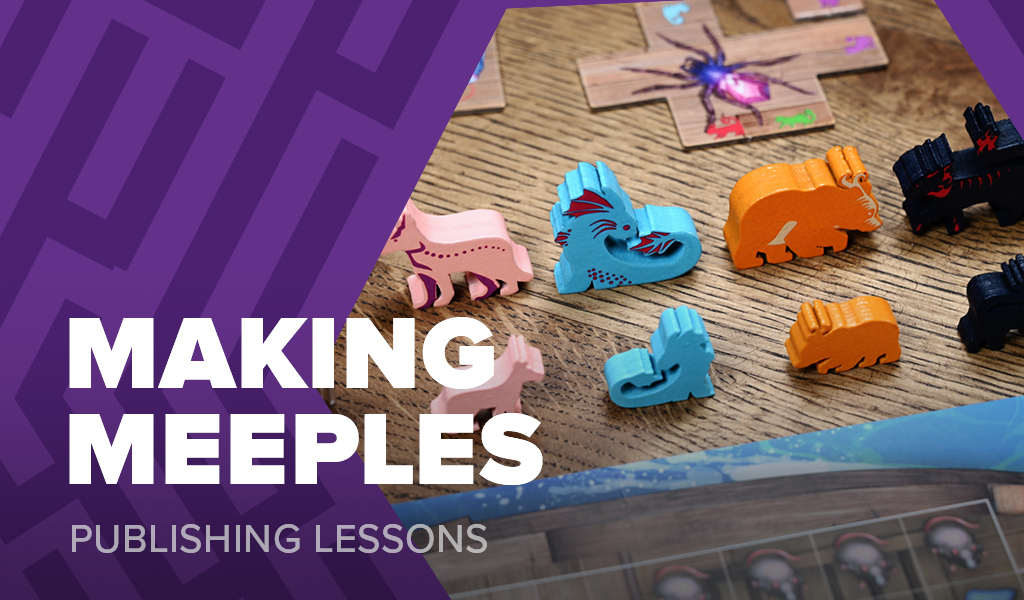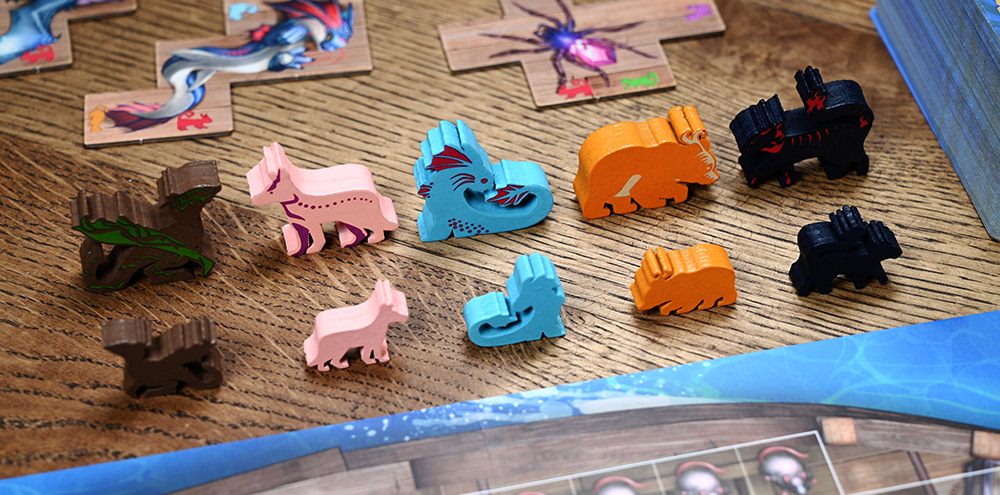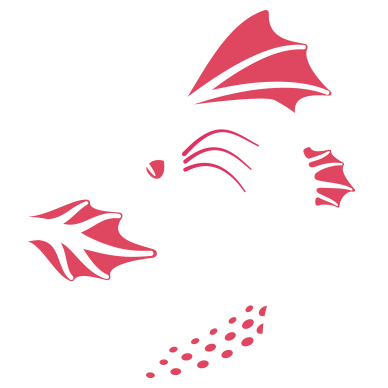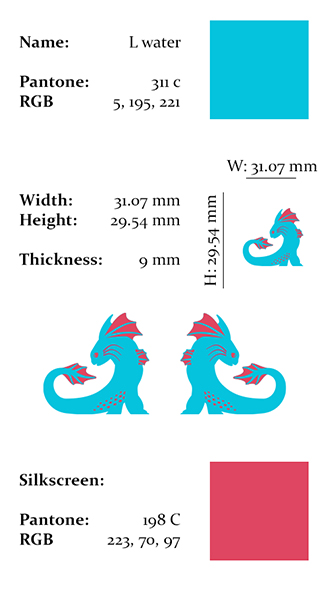How to make a meeple

Meeples are one of the most popular components in modern board games and are frequently used as a way of upgrading cardboard tokens.
They come in all shapes and sizes and while often they are a single colour, you can also apply a variety of techniques to add markings.

Most board game manufacturers will make meeples and typically the process just requires you to supply them with the correct files. The issue is, sampling meeples can take time and money so if you get those files wrong it can cause weeks of delays.
The outline
The most important file is the outline file which should contain an outline of your meeple in SVG format. Personally, I use Adobe Illustrator to design and make my meeples but other options exist.

Meeples are laser cut out of sheets of wood and the outline defines the line the laser should follow when cutting out your shape.
It is possible to includes holes within your meeple should you wish to cut out a shape within the meeple itself, but I recommend avoiding this unless it is critical to your design. It can be challenging to get good results and will typically cost more.
Markings
If you wish to include markings on your meeple then I recommend providing the markings as a solid shape in SVG form, and also to scale in PDF format.

This will help ensure you get accurate and high quality results.
It is important to note that many manufacturers will request a 1, 2, or even 3mm margin for error when it comes to the position of markings which makes it extremely hard to line markings up with the edge of a meeple.
For the easiest, most reliable results, I’ve found having markings in the middle of the shape and not touching the edge is best.
For more complex markings (like those I use in The Isle of Cats), be prepared for extra costs, additional rounds of sampling, and additional quality assurance to make sure everything sits neatly.
It is also possible to include multiple colours in your markings but this increases the chances of inaccuracies, delays, and costs, which has always resulted in me keeping to just 1 colour and I’d recommend taking the same approach, especially if this is your first time making meeples.
Specification document
Alongside the outline and marking files, I always create a specification document that contains all the information about the meeple.

Core details
At the top I give each meeple a name that we can refer to it by, list the pantone colour, closest RGB colour, and show a reference square of this colour to refer to.
Keep in mind, meeples are painted which means you should provide a pantone colour based on paints and not a digital colour based on your screen. I include the closest RGB colour as a check so the manufacturer can confirm the selected pantone colour roughly matches the digital colour (as I can’t send them physical colour samples via email). This helps avoid a complete mismatch in colours should there be an error with the listed pantone colour.
If you’re not used to pantone colours it is important to recognise, they look very different on a screen than how they look painted in real life. You should use physical samples if the colour is critical for your game.
Dimensions
Next, I include the absolute dimensions for width, height, and thickness and also show a sample of the final meeple with the dimensions next to it.
This helps avoid any misunderstandings and reduces the likelihood of problems during the sample process.
Markings
Finally, if I am including markings I show how both sides of the meeple would look with the markings, and define the pantone, closest RGB colour, and show a reference block of colour to refer to.
When it comes to manufacturing the best way to save time and money is to over prescribe the details and while it may be tempting to provide the least amount of information possible, it also adds risks.
To make meeples I recommend spending a bit of extra time to make sure you’ve fully defined your specification and supplied every file needed. This will also help the factory provide you with accurate quotes.
Frank West
Frank West is a gamer and designer based in Bristol, UK. He published his first board game, The City of Kings, in 2018 and now works on other games and organising events in the local area. His goal? To design and publish games focusing on immersive themes, fun mechanics and beautiful components. If you have any questions or would just like a chat, feel free to get in touch at any time!

